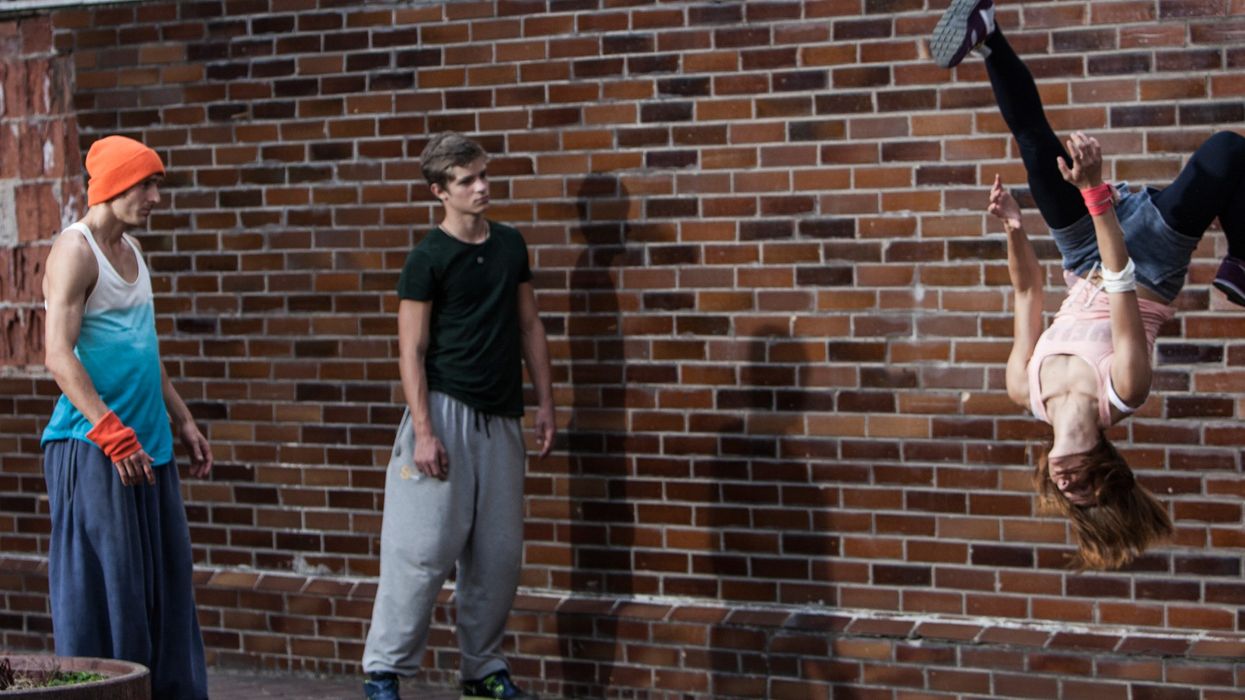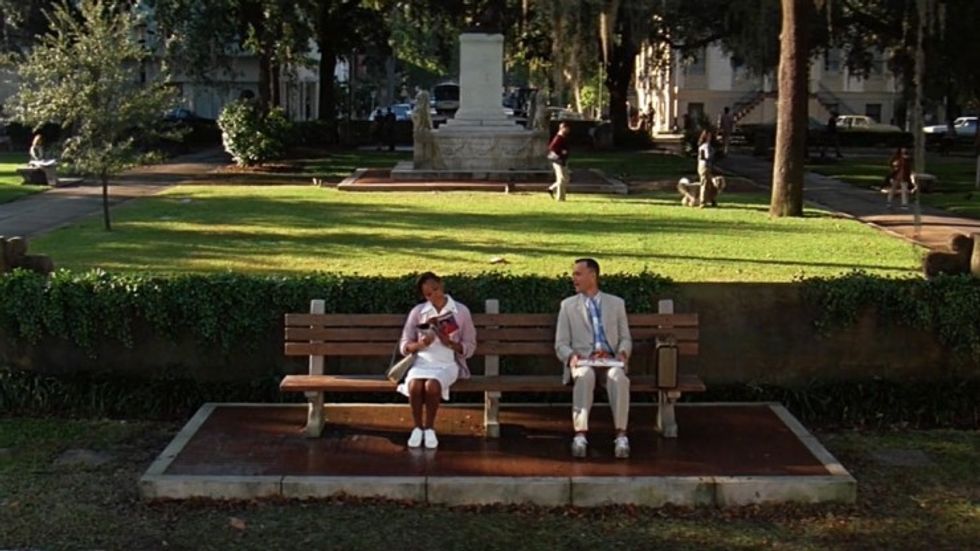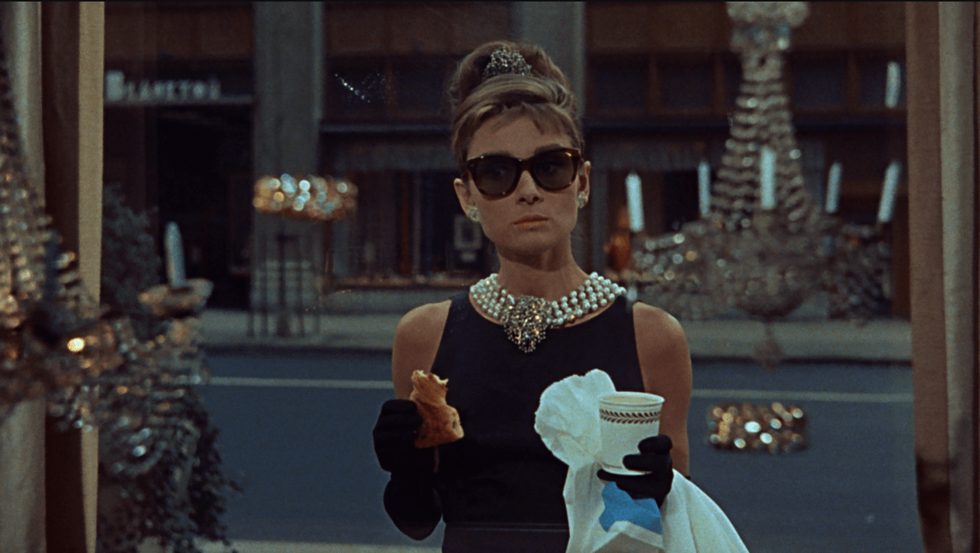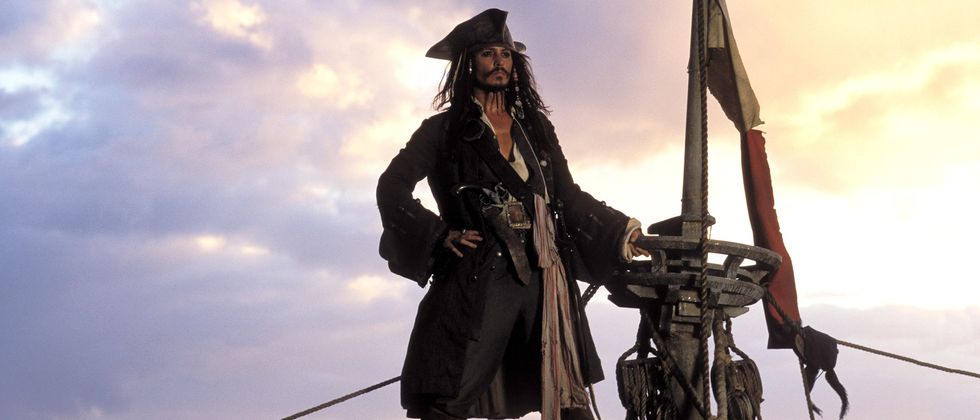Growing Up Parkour: 'In Your Dreams!' Director Films a Different Kind of Teen Movie
Czech filmmaker Petr Oukropec grapples with the unique challenges and rewards of youth-oriented filmmaking.

Major film festivals tend to cater to adult audiences, often entirely overlooking children and families, despite the fact that they make up a major segment of actual media consumers. Berlinale 2016 has recognized this gap by offering a wealth of youth-focused films in its Generation program. But this genre comes with a unique challenge for its makers: how to make sure your work can reach its intended audience emotionally, while continuing to push the medium forward.
Czech teen film In Your Dreams! handles this challenge admirably. Focusing on Laura, a teen girl who rises through Prague’s parkour scene, the movie creates a portrait of adolescent anxiety by visualizing Laura’s waking dreams until they intermingle with reality ("Parkour" is an improvisational urban acrobatic style popularized on YouTube). Director Petr Oukropec cast real parkour athletes in the starring roles, and shoots his action scenes in long takes against the grey expanse of Prague public spaces, so we can see the performers pulling off their tricks in smooth single takes. The dream sequences, meanwhile, interweave young love with fairy tale mythology.
In Your Dreams! is the second directorial effort from Oukropec – his first, Blue Tiger, targeted an even younger audience. In Berlin, Oukropec spoke with No Film School about training athletes to act, Czech’s history of children’s cinema and finding the unexpected way to tell a teen girl’s story. This interview has been edited for clarity.
NFS:When you were casting this film, were you looking for actors who could do parkour or athletes who could be trained to act?
We knew from the start that if it would be in a parkour society, we needed someone who was really, physically prepared for this kind of role. But we didn’t know any girls who could do this kind of thing, so I didn’t predict it was possible. I had seen, in France, some [girl parkour athletes], but really few. In our country, some girls started, but [at a] very small level. I felt that I needed an actor with authentic feelings, so we started bigger casting, more people, including young girls from other sports like skating. Then we started thinking about teaching some really good actress parkour. And to be at that level, you need one year’s training, and be really focused.
But we were happy and lucky at the end, because at the last moment, [we found] Barbora Štikarová. She had started to do parkour before, home teaching, and she trained in some small city, not in Prague – she was not known in the community. She had made her first small video, and we had seen her jumps in this kamikaze style. And my friends and assistants from the parkour community told me she’s amazing, from a physical point of view.
And we started to train her more, and made some rehearsals with the real actors… she was completely out of film, theater, everything.
NFS: You use long takes for the parkour scenes in the film. We can see that those are the real actors doing it.
Yes, it’s completely real. I wanted to do it authentically, and not to make a parkour video [highlight videos the athletes make themselves and put on YouTube] – they’re short, amazing videos which you like to see, but they’re also three minutes long. It’s fast, it’s fun, it’s nice, but a little bit boring. So the parkour in the film is in the background, and you feel it much more – the audience is inside this world, and feels the "fails", and sees the relationships and the training.
NFS: It’s funny that the film has a plot with the character filming the parkour kids, but you have a different style than he does.
We wanted to do it realistically, but you see there’s a little stylization in the film, from the DP, from the set design. We wanted to shoot in the right locations, especially the Prague locations, these wide shots – because the film is in Cinemascope lenses. We wanted to create the world of this young people, which we have never seen before in other Czech films. They are really special locations – this is not Prague Castle and Charles Bridge.
NFS: Were these areas where kids would actually do parkour in?
Yes, [the sport] has started to be really popular, because the first generation of parkourists, who are now about 22, 24, were the first ones in our country. But they’re now really well-known internationally, at the European or world level… They’ve started to teach young boys, and the boys around 10, 12, are really attracted to it, because it’s freedom. It’s not organized; there’s no society supporting it. It’s just your own body, and this free movement. So they’ve started to make parkour courses and summer camps, and it’s growing.
NFS: And then you have this other part of the film, the dream sequences.
We decided to not make a big difference in the visual style between the dreams and the reality. It’s stylized a little bit in the costumes, the settings, but not the grading of the colors or something like that. It was just a question about how long the dreams [in] the film need to be. And we really cut it down to, in my view, this optimum level.
NFS: Your previous film, Blue Tiger, also geared toward young audiences.
That one was for little kids.
NFS: And this one is for teenagers. So is there something about stories of young people that you feel attracted to?
Yeah. I feel there is an audience for these kinds of films, and there’s a nice history and continuity in Czech cinema for children, which was interrupted for many reasons. But now in our country, directors are just shooting fairy tales, you know, with princesses in castles and this stuff for Christmastime, and not real stories about young kids.
I’m also attracted to this age [because it's] between adulthood and childhood: you have everything in front of you and you are full of energy, and there’s a really crazy energy in it. You are pure in the same moment, and you want to do everything 100 percent and you want the world to be nice for you. And there are also first crushes. It’s interesting for me.
NFS: It’s funny you mention princesses, since you have the princess outfits in this film’s dream scenes.
Yeah, but a different one. It’s kind of a funny way.
NFS: Was that a commentary on those kinds of films?
A little, because she doesn’t want to be a little girl. When there’s the prince/”parkour princess” scenes, she doesn’t want to look like [a princess]. But she feels her emotions are similar to a little princess in some way. And this is an archetype of dreams from an early age.
NFS: Did you have any films you looked to for inspiration?
I love Lukas Moodysson films, or Michel Gondry – this kind of mixing of the visual activity, to work with elements which are between dreams and [reality]. [With] Lukas it’s more about the reality, how to work with the kids.
To learn more about In Your Dreams!, visit its Berlinale profile page.
Be sure to check back for more coverage of Berlinale 2016.














